Solomon R. Guggenheim Museum. New York
Through September 5, 2022
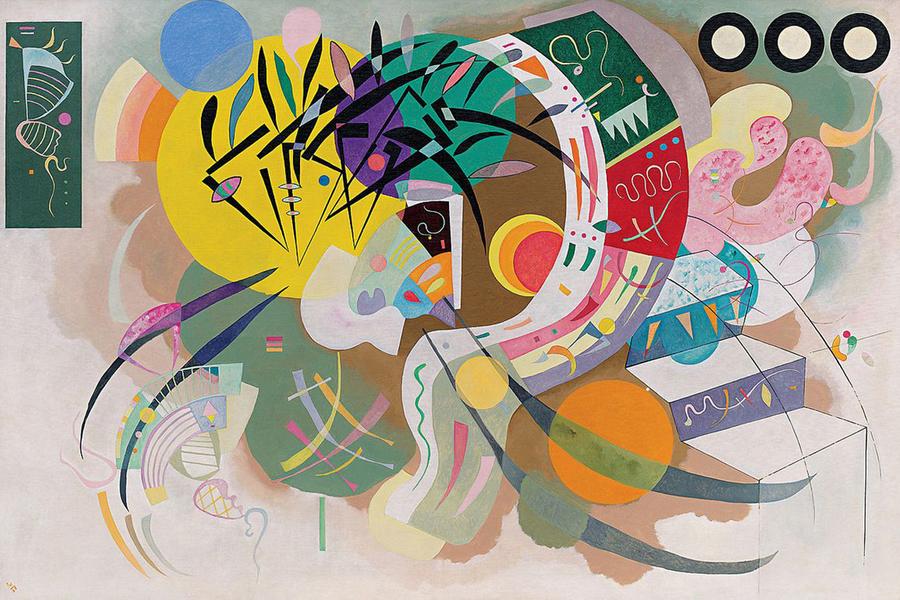
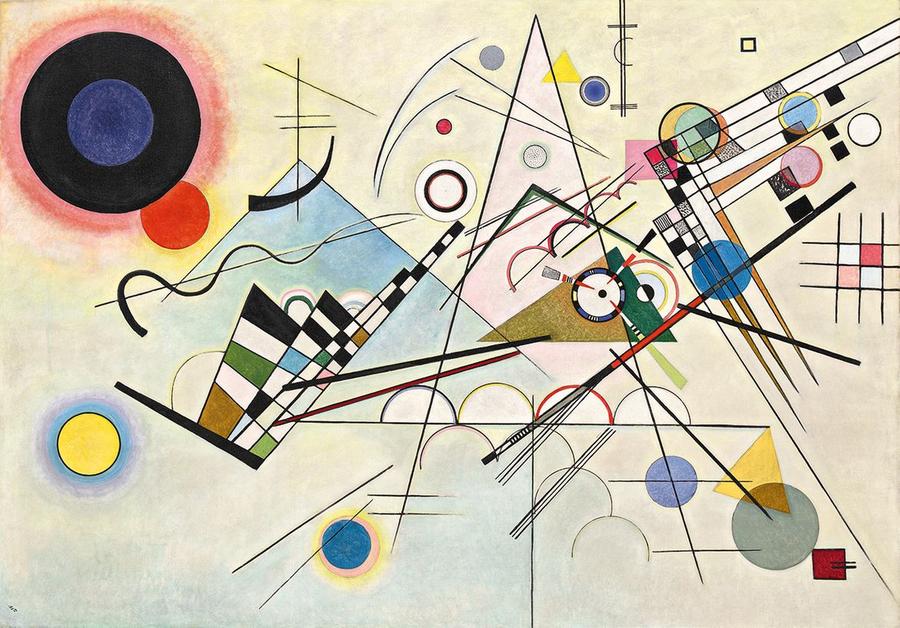
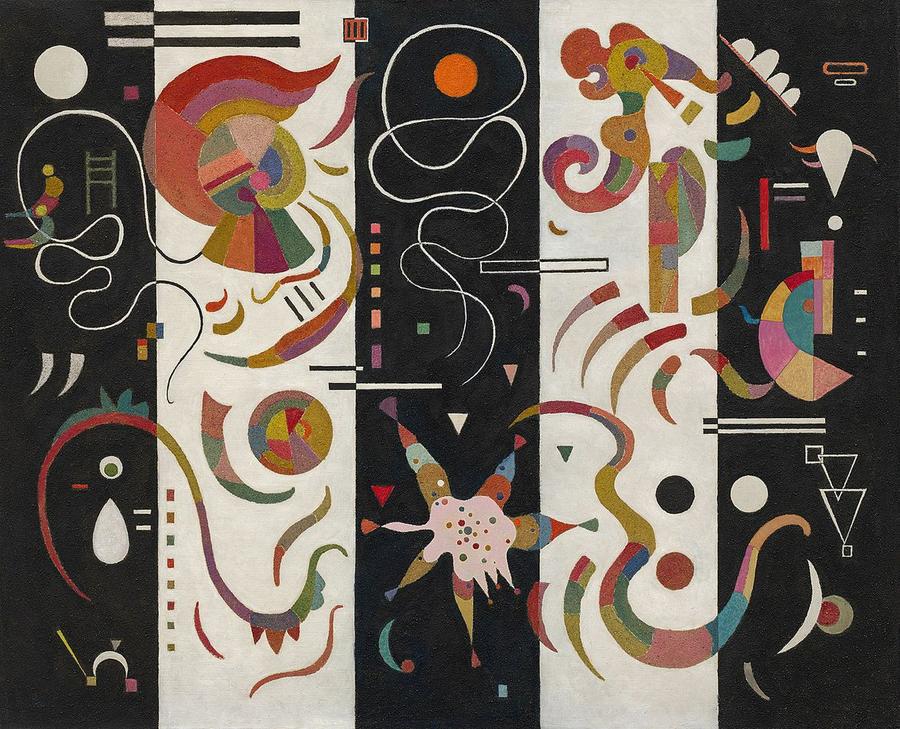
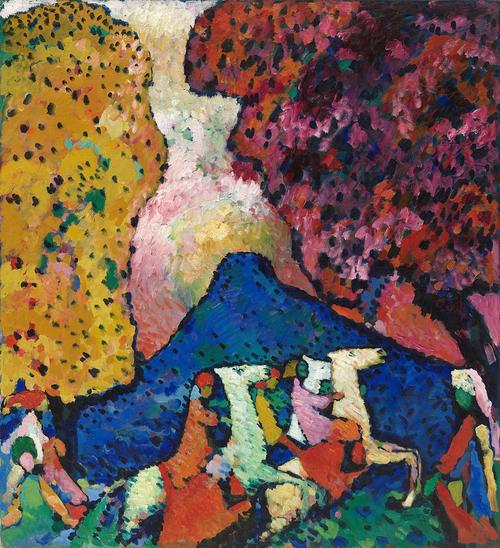
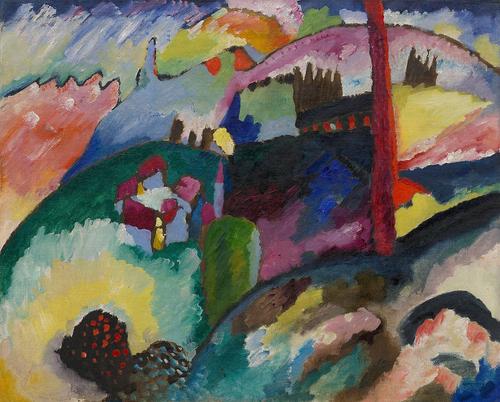
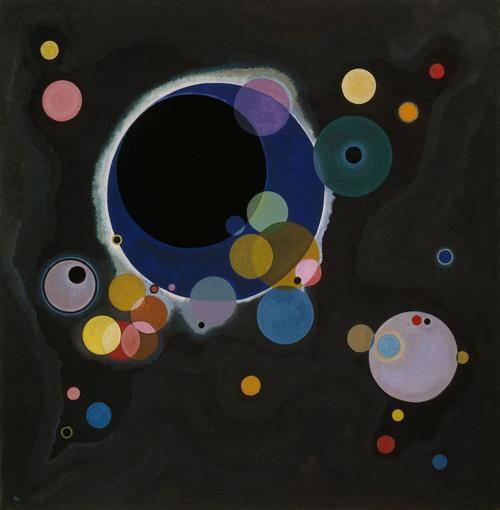
On view now through September 5, 2022, New York's Solomon R. Guggenheim Museum presents Vasily Kandinsky: Around the Circle. Drawing from the Guggenheim’s exceptional collection of works by Kandinsky, the exhibition features approximately eighty paintings, watercolors, and woodcuts, as well as a selection of his illustrated books, spanning the artist’s earlier years in Russia and Germany and through his exile in France at the end of his life. The presentation, installed along the midsection of the museum’s spiral rotunda, reconsiders Kandinsky’s career not as a fixed path from representation to abstraction, but as a circular passage through persistent themes centered around the pursuit of one dominant ideal: the impulse for spiritual expression.
Vasily Kandinsky: Around the Circle is organized by Megan Fontanella, Curator, Modern Art and Provenance. (Hear her talk about the show on WNYC.)
Vasily Kandinsky (b. 1866, Moscow; d. 1944, Neuilly-sur-Seine, France) is recognized as a major artistic innovator. He was among those who advanced nonrepresentational modes of art-making, to lasting effect. Uprooted time and again, the artist’s stylistic evolution was intimately tied to his sense of place and his meaningful intersections with artists, musicians, poets, and other cultural producers who shared his transnational vision and experimental bent.
Vasily Kandinsky: Around the Circle portrays how, in seeking to free art from its ties to nature and representation, Kandinsky remained committed to exploring a subject matter based on what he called the artist’s “inner necessity.” Persistent themes—from memory and identity to sensorial experience and spirituality—are traced in the work of an artist whose theories and works continue to resonate today.
Kandinsky’s groundbreaking career unfolds in chronologically reverse order proceeding upwards along the Guggenheim’s spiral ramp. The exhibition begins with the artist’s final chapter, set in France, when the natural sciences and Surrealism, as well as an abiding interest in Russian and Siberian cultural practices and folklore, informed his biomorphic imagery and prompted recurrent themes of regeneration and metamorphosis. Arranged on the fourth level, works from his decade at the Bauhaus, a German school of applied art and design, manifest Kandinsky’s conviction that art could transform self and society. This body of work reflects the revitalization of his abstract style following his renewed contact with the Russian avant-garde in the late 1910s. The artist increasingly adopted geometric motifs, and in particular the circle, as a vehicle for his emotive language. The final section of the exhibition, positioned towards the apex of the rotunda, examines Kandinsky’s earliest paintings, made while he was living in or around Munich. There he participated in heightened vanguard activity across multiple disciplines. In time the artist interrogated the expressive possibilities of color, line, and form, inspired in part by contemporary music. At every turn Kandinsky responded to his environment and developed new ways to probe the spiritual in art.